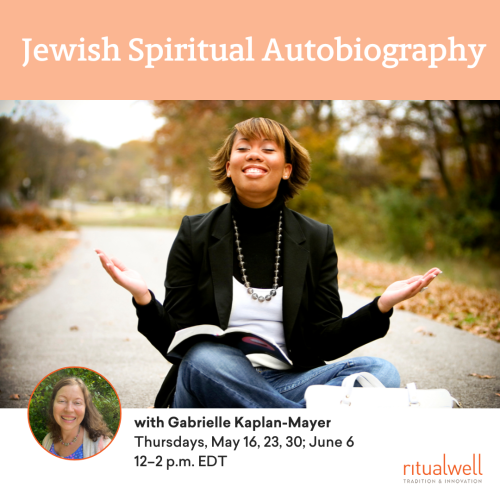A liturgy represents what we might call the sedimentation of Jewish experience. Each generation lays down a different stratum, phrased in its own metaphors and its own language, languages that arose out of particular social and political worlds. Because liturgies express the sedimentation of Jewish experience rather than the language, world, and perspective of any one generation, we become more than ourselves when we pray them. We become representatives of the collective IsraelLit. ''the one who struggles with God.'' Israel means many things. It is first used with reference to Jacob, whose name is changed to Israel (Genesis 32:29), the one who struggles with God. Jacob's children, the Jewish people, become B'nai Israel, the children of Israel. The name also refers to the land of Israel and the State of Israel. that bridges all generations.
There is only one group among the people Israel whose prayers are not preserved in any of the strata of liturgy. That group is Jewish women. At most, we have a handful of devotional prayers written for women, and some few reportedly by women, for women to say in private prayer. But since women in classical halakha are private individuals who lack the capacity to constitute a praying community, no prayers have been preserved from women praying together and no prayers were contributed by women to the liturgies said by men. Liturgically, more than in any other area, Jewish women have no past.
How, then, are liturgies to be mended in the future, so that women as well as men lay down the sediment of collective Jewish experience in prayer? Some theorists have said that this is unnecessary, that if women are included as full participants in the praying community, the masculine language of liturgy will include them by implication. There is no need to mention ancestresses or use language or imagery drawn from women’s experiences. Other theorists charge that repeating the liturgies of patriarchy conditions us to go on accepting patriarchy. All elements of the liturgies built up by men must be expunged, and we must start anew. The philosophical forbear of this position is Liberal Judaism, whose reform of the liturgy followed the premise that previous strata of Jewish experience were not only inapplicable but morally, intellectually, and spiritually inferior to the Jewish experience of modernity.
The first view is inadequate because it includes women in the community by making them invisible as women, by making them “honorary men.” Women are still excluded from liturgy, but their exclusion is veiled. The second view avenges the destruction of women’s liturgical past by eradicating the entire liturgical past. This assumes that no spiritual expressions in the sedimentation’s of the Jewish past were shared by women and men, which is manifestly untrue; or it accounts for ostensible sharings by labeling them false consciousness on the part of the women. This invalidates the spiritual experience of many of our foremothers.
The view that it is enough to include women in communal prayer without changing the liturgies to reflect their presence or their spiritual experience, covertly excludes women from the community and arrogantly presumes that they have nothing substantive to offer. The view that the liturgies of the past must be abandoned completely arouses a great terror in those who have written those liturgies upon their hearts and prayed them faithfully; the terror of becoming part of an unrecognizable Judaism, of becoming strangers at home.
We would argue moreover, that this latter view cannot produce viable liturgies. Because its liturgies represent only the most current sedimentation of Jewish experience, they replace with a single thin layer all that was deep, rich and varied, and reduce to the voice of a single generation all that was multivocal, clashing, and provocative. The results are throwaway liturgies, liturgies that sound dated in five or ten years time, prayer books that must be utterly transformed every twenty years, services which are passe in a matter of months. How many Jewish communities continue to pray the “creative services” they wrote in 1968?
Liturgy changes continually, but the magic can happen only when our attention is not fixed upon the machinery of change. A liturgy is not a philosophy lecture or a political platform or a sociological experiment, although all that we know and do and believe informs our liturgies. A liturgy speaks to the heart, in the languages of the heart. To it belongs, not the reasoned discourse of science or positivism, but the allusive, elusive, impassioned discourse of metaphor and narrative, and of sound for its own sake: meter, rhyme, and melody, as well as the silent languages of gesture, of ritual art and ritual objects, of the environment of prayer, of fellowship.
In this SelikhotServices held early in the morning throughout the month of Elul, leading up to Rosh Hashanah, during which Jews begin the process of asking forgiveness for our sins. service we have tried to make a model liturgy in which both women and men can fully be present without banishing or silencing the voices of the Jewish past. We rewrote one traditional text to address God in the feminine, but many of our appellations echo Scriptural phrases or terms from the mystical tradition. To a text listing Biblical heroes answered by God, we simply added corresponding heroines. We have not expunged the metaphors of feudalism, of empire or even of the patriarchal family, metaphors of power and hierarchy, but we have placed a new emphasis on metaphors of relationship premised upon both equality and difference: God and Israel as partners and lovers, as friends. We asked ourselves what sin and teshuvaLit: Returning/Turning The process of repentance through which one "returns" to oneself and to God. The season of t'shuva begins at the start of the month of Elul and culuminates forty days later on Yom Kippur. would mean in the context of these relational metaphors. We have tried always to remember the teaching, which should guide all makers of liturgy: Know before whom you stand.
From the Selikhot service compiled by Yaffa Weisman and RachelLavan's younger daughter and Jacob's beloved wife second wife (after he is initially tricked into marrying her older sister, Leah). Rachel grieves throughout her life that she is barren while Leah is so fertile. Ultimately, Rachel gives birth to Joseph and dies in childbirth with Benjamin. Rachel is remembered as compassionate (she is said to still weep for her children), and infertile women often invoke Rachel as a kind of intercessor and visit her tomb on the road to Bethlehem. Adler for the Los Angeles Feminist Center, 1991. Used by permission of Rachel Adler.











